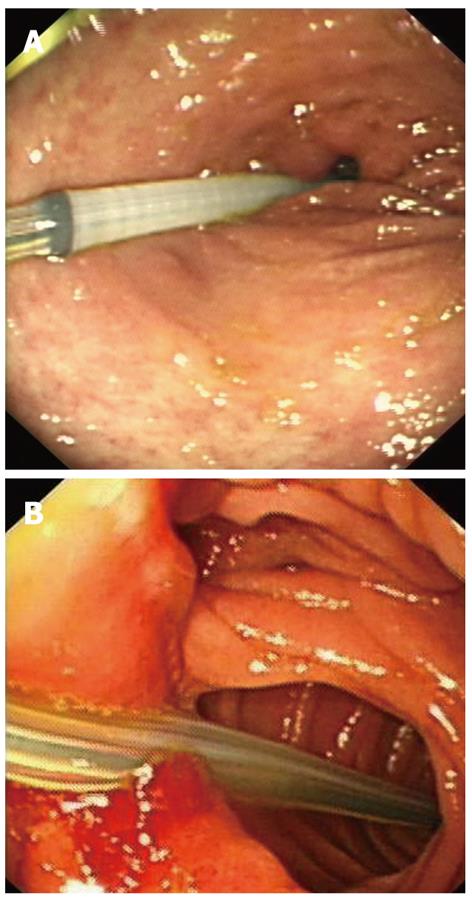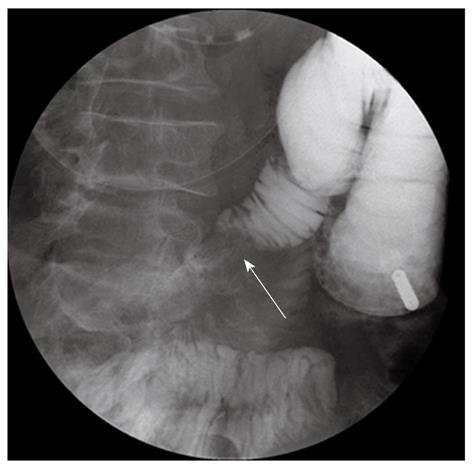Copyright
©2012 Baishideng Publishing Group Co.
World J Gastroenterol. Apr 28, 2012; 18(16): 1968-1974
Published online Apr 28, 2012. doi: 10.3748/wjg.v18.i16.1968
Published online Apr 28, 2012. doi: 10.3748/wjg.v18.i16.1968
Figure 1 Endoscopic placement of ileus tube.
A: An ileus tube is passed through the pylorus under gastroscopy in a patient with postoperative adhesive small bowel obstruction; B: An ileus tube led by a guidewire is endoscopically advanced into the efferent loop in a patient who had distal partial gastrectomy.
Figure 2 Radiographs of ileus tube decompression.
Plain abdominal radiographs (A) and (B) reviewed 3 d after ileus tube decompression compared with scans on admission in a patient with postoperative adhesive small bowel obstruction. A: The diffuse distended loops of small bowel that was filled with gas and fluid before intubation; air-fluid levels were seen in the enteric cavity; B: Reviewed 3 d after intubation; the previous gas-filled or fluid-filled small bowel loops showed no evidence of distention, the air-fluid levels disappeared, and the long tube had moved downward while the tip reached the distal jejunum.
Figure 3 Diagnostic radiographic enteroclysis.
Gastroenterography displayed on the 5th day of ileus tube decompression in a patient with postoperative adhesive small bowel obstruction. The tip of the tube had reached to the distal jejunum. After the anterior balloon was inflated with gas, angiografin was injected into the tube for gastrointestinal imaging to locate the lesion or stenosis in the bowel. Stenosis was found (arrow) in the small intestine with a filling defect, but none was developed in the distal bowel.
-
Citation: Chen XL, Ji F, Lin Q, Chen YP, Lin JJ, Ye F, Yu JR, Wu YJ. A prospective randomized trial of transnasal ileus tube
vs nasogastric tube for adhesive small bowel obstruction. World J Gastroenterol 2012; 18(16): 1968-1974 - URL: https://www.wjgnet.com/1007-9327/full/v18/i16/1968.htm
- DOI: https://dx.doi.org/10.3748/wjg.v18.i16.1968











